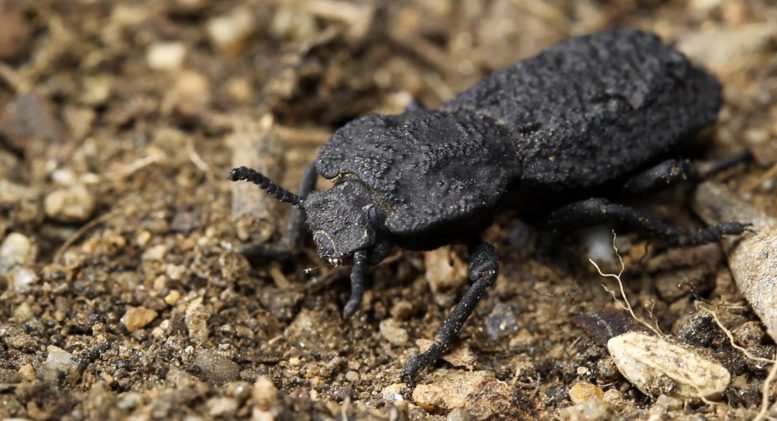
Native to desert habitats in Southern California, the diabolical ironclad beetle has an exoskeleton that’s one of the toughest, most crush-resistant structures known to exist in the animal kingdom. UCI researchers led a project to study the components and architectures responsible for making the creature so indestructible. Credit: David Kisailus / UCI
Getting run over by a car is not a near-death experience for the diabolical ironclad beetle.
How the beetle survives could inspire the development of new materials with the same herculean toughness, engineers show in a paper published today (Wednesday, October 21, 2020) in Nature.
These materials would be stiff but ductile like a paper clip, making machinery such as aircraft gas turbines safer and longer-lasting, the researchers said.
The study, led by engineers at the University of California, Irvine (UCI) and Purdue University, found that the diabolical ironclad beetle’s super-toughness lies in its two armorlike “elytron” that meet at a line, called a suture, running the length of the abdomen.
In flying beetles, the elytra protect wings and facilitate flight. But the diabolical ironclad beetle doesn’t have wings. Instead, the elytra and connective suture help to distribute an applied force more evenly throughout its body.
“The suture kind of acts like a jigsaw puzzle. It connects various exoskeletal blades — puzzle pieces — in the abdomen under the elytra,” said Pablo Zavattieri, Purdue’s Jerry M. and Lynda T. Engelhardt Professor of Civil Engineering.
This jigsaw puzzle comes to the rescue in several different ways depending on the amount of force applied, Zavattieri said. This video explains these findings:
The diabolical ironclad beetle is so tough, it can survive getting run over by a car applying ~100 newtons of force. Engineers from Purdue University and UC-Irvine teamed up to unlock the beetle’s secrets. Credit: Purdue University/Erin Easterling
To uncover these strategies, a team led by UCI professor David Kisailus first tested the limits of the beetle’s exoskeleton and characterized the various structural components involved by looking at CT scans.
Using compressive steel plates, UCI researchers found that the diabolical ironclad beetle can take on an applied force of about 150 newtons — a load of at least 39,000 times its body weight — before the exoskeleton begins to fracture.
That’s more impressive than sounds: A car tire would apply a force of about 100 newtons if running over the beetle on a dirt surface, the researchers estimate. Other terrestrial beetles the team tested couldn’t handle even half the force that a diabolical ironclad can withstand.
Zavattieri’s lab followed up these experiments with extensive computer simulations and 3D-printed models that isolated certain structures to better understand their role in saving the beetle’s life.
All of these studies combined revealed that when under a compressive load such as a car tire, the diabolical ironclad beetle’s jigsaw-like suture offers two lines of defense.
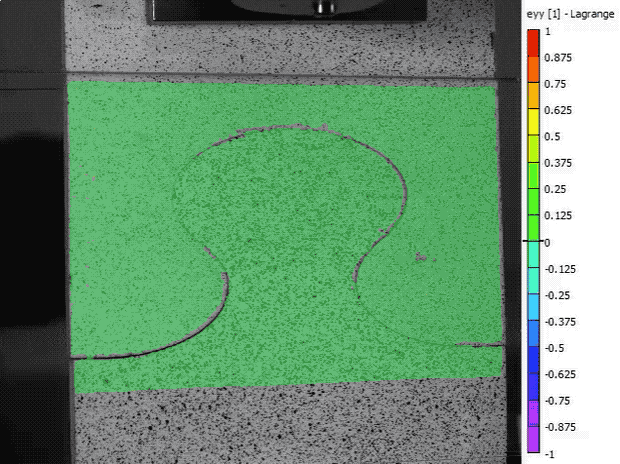
The diabolical ironclad beetle has puzzle piece-like blades in its abdomen that “delaminate” to prevent the beetle’s exoskeleton from suddenly failing under immense force. Purdue researchers simulated this mechanism using 3D-printed versions of the blades. Credit: Purdue University/Maryam Hosseini and Pablo Zavattieri
First, the interconnecting blades lock to prevent themselves from pulling out of the suture like puzzle pieces. Second, the suture and blades delaminate, which leads to a more graceful deformation that mitigates catastrophic failure of the exoskeleton. Each strategy dissipates energy to circumvent a fatal impact at the neck, where the beetle’s exoskeleton is most likely to fracture.
Even if a maximum force is applied to the beetle’s exoskeleton, delamination allows the interconnecting blades to pull out from the suture more gently. If the blades were to interlock too much or too little, the sudden release of energy would cause the beetle’s neck to snap.
It’s not yet known if the diabolical ironclad beetle has a way to heal itself after surviving a car “accident.” But knowing about these strategies could already solve fatigue problems in various kinds of machinery.
“An active engineering challenge is joining together different materials without limiting their ability to support loads. The diabolical ironclad beetle has strategies to circumvent these limitations,” said David Restrepo, an assistant professor at the University of Texas at San Antonio who worked on this project as a postdoctoral researcher in Zavattieri’s group.
In the gas turbines of aircraft, for example, metals and composite materials are joined together with a mechanical fastener. This fastener adds weight and introduces stress that could lead to fractures and corrosion.
“These fasteners ultimately decrease the performance of the system and need to be replaced every so often. But the interfacial sutures of the diabolical ironclad beetle provide a robust and more predictable failure that could help solve these problems,” said Maryam Hosseini, who worked on this project as a Ph.D. student and postdoctoral researcher in Zavattieri’s group. Hosseini is now an engineering manager at Procter & Gamble Corp.
UCI researchers built a carbon fiber composite fastener mimicking a diabolical ironclad beetle’s suture. Purdue researchers found through loading tests that this fastener is just as strong as a standard aerospace fastener, but significantly tougher.
“This work shows that we may be able to shift from using strong, brittle materials to ones that can be both strong and tough by dissipating energy as they break. That’s what nature has enabled the diabolical ironclad beetle to do,” Zavattieri said.
Reference: “Toughening mechanisms of the elytra of the diabolical ironclad beetle” by Jesus Rivera, Maryam Sadat Hosseini, David Restrepo, Satoshi Murata, Drago Vasile, Dilworth Y. Parkinson, Harold S. Barnard, Atsushi Arakaki, Pablo Zavattieri and David Kisailus, 21 October 2020, Nature.
DOI: 10.1038/s41586-020-2813-8
This research is financially supported by the Air Force Office of Scientific Research and the Army Research Office through the Multi-University Research Initiative (award number FA9550-15-1-0009). The study used resources at the Advanced Light Source, a U.S. Department of Energy Office of Science User Facility.

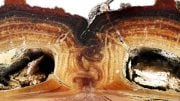
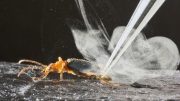
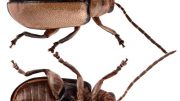
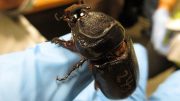
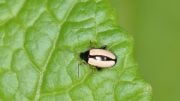
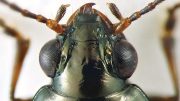
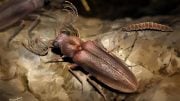
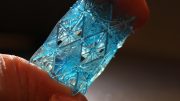
Fascinating.
Was horrified when two aircrafts were flown into the world trade center on 9/11 and was wondering why the building materials could not be developed which are more resistent to such a external force. Also, such materials if they can be produced on a industrial scale and used in civil engineering can be resistent to eartthquakes and other natural disaters as well.
The possibilities are endless (including medical surgery?). However , was wondering why the beetle was named “diabolical”. Survival of materials to large force applied on it mmay change the future of indutrialization and affect all areas of economic activity, hopefully for the better.
very good